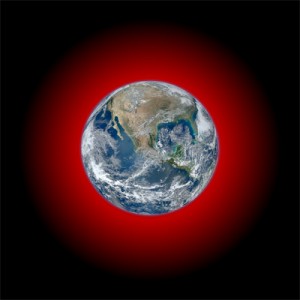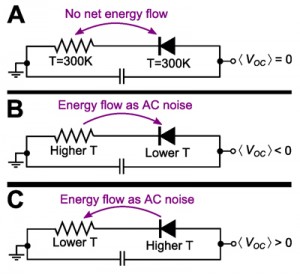March 19, 2014 – The solar radiation that strikes Earth warms it when compared to the surrounding vacuum of space and most of it we lose as it bounces right back out. If we could harvest the radiation in the form of infrared emissions the difference between the warm Earth and colder space could answer the world’s power needs once and for all.
In a paper entitled Harvesting renewable energy from Earth’s mid-infrared emissions, published in the March Proceedings of the National Academy of Sciences, just such a scheme is proposed through the creation of an emissive energy harvester (EEH). This would be an energy creating device capable of converting the wasted heat that bleeds from our atmosphere into space. It amounts to 100 million Gigawatts per second. The EEH would convert this heat imbalance into direct-current (DC) power.
Two schemes are proposed:
- A thermal EEH which would operate in a similar manner to solar thermal power generators.
- An optoelectronic EEH which would operate like a solar photovoltaic power generator in reverse using an infrared-frequency rectifying antenna or rectenna.
Whether thermal or optoelectronic the EEH would be an emitter rather than a receiver. The thermal EEH would act like a hot plate radiating energy to a cold plate which would lie on top of it facing the sky. The radiated heat energy would amount to a few watts per square meter and would be generated continuously, day or night.
The optoelectronic EEH would consist of nanoscale electronic components, tiny infrared-harvesting rectennas laminated onto a solar panel which each individually would generate a tiny amount of current and collectively could produce massive amounts of energy. Recent advances in plasmonics (the oscillation of electrons between two materials) using graphene makes this latter option potentially feasible.
What’s holding us back from building this type of energy generating source? We need to do more experimentation with nanomaterials to get just the right ones to optimize the energy we generate. And we need to develop a class of diodes in rectennas that can switch on and off 30 trillion times a second. A schematic of what one of these resistor generator circuits looks like can be seen below.














